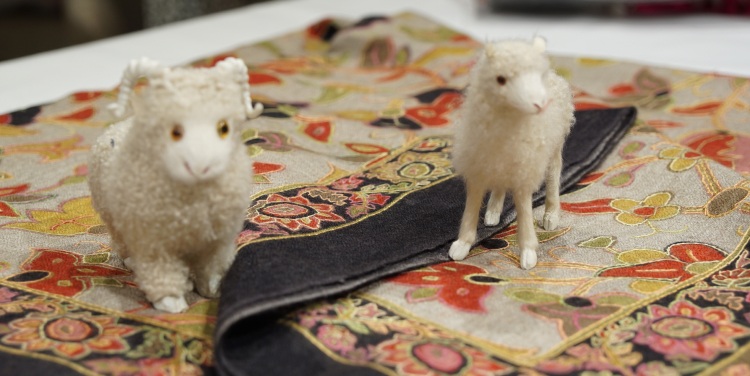Nothing beats the authenticity of something age-old. Be it a recipe, a tradition, or the process of making a Pashmina shawl. The quality that a legacy provides is indescribable.
The process of making a Pashmina Shawl is one such legacy.
The Pashmina providers
Considered one of the finest craftsmanship in the world, Pashmina is a kind of fabric, widely shawls, made from the wool of goats native to the Changthang plateau of Ladakh, India. These goats are Changthangi goats and are found nowhere else in the world. The winter temperature of the Changthang plateau can drop up to −40 °C as it has a minimum altitude of 13,500 feet above sea level. So naturally, nature envelopes these goats with wool of incomparable warmth, that helps them survive these extreme cold temperatures, which then they shed during spring, that is, only once a year. This ultra-warm wool is then collected by combing and not shearing, which is further filtered.
Yarun – Wounding of yarn around iron rods
Spread across an area of 10 meters, around 4 to 8 iron rods are already fixed on the ground and the wool yarn is wound around them first. Approximately 1200 threads are stretched across them. The person specialized to carry out this process walks across the rod multiple times (12 kilometers) while winding the yarn across them, to make a complete warp.
Bharun- The Warp Dressing
Bharangur or the warp-dresser dresses the warp before it can be put on the handloom. It involves the stretching and the fixing of the yarn in the heddles of a loom.
Tulun- Winding of Yarn
After drying the yarn in the sun, it is again wound on wooden spindles called prech in Kashmiri.
Wonun – The Weaving
The yarn is then weaved by hand by a professional called Wovur. It’s like a pianist working, but with both his hands and feet simultaneously.
Dyeing
It becomes a costly process then, as Pashmina is natural wool and needs dyes appropriate for natural fibers. Based on different requirements, it is carried out by specialist dyers called Ranger.
The approval
The master craftsman called Voste, is in charge and approves the design or asks for some changes if needed.
The final magic of embroidery
Once approved, the artisans of embroidery work with their magic hands. Unlike magic it doesn’t happen in a snap but takes up to 4 weeks to 3 years of their lives, intricately working on each shawl, based on the requirement.
The washing and finishing
The shawl is finally washed with mild detergents in the spring water. It is done by a specialist washer who smoothly strikes the fabric against a smooth stone in his expertise. The shawl is then dried and ironed professionally to be sent out as the final product.
It requires a master artist to make a piece of art and there are only a few left who still have expertise in these traditional skills. Their hard work and skills, and an ample amount of time spent on the process give the result, that is the final product of beauty, warmth, and elegance you see.


























